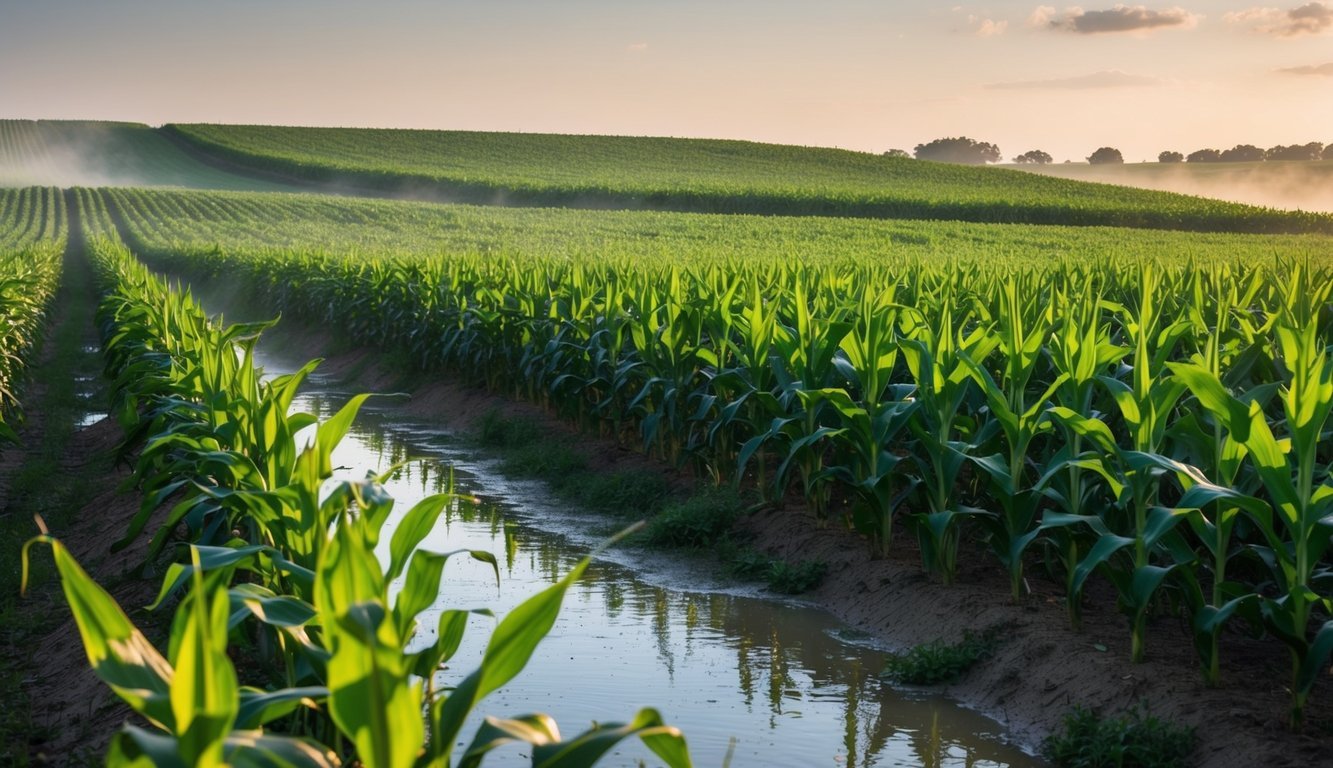 Recent research has brought to light some significant shifts in precipitation patterns across the U.S. Corn Belt, driven largely by changes in land use and irrigation practices, as well as the area’s naturally occurring shallow groundwater.
Recent research has brought to light some significant shifts in precipitation patterns across the U.S. Corn Belt, driven largely by changes in land use and irrigation practices, as well as the area’s naturally occurring shallow groundwater.This region is an essential hub for agriculture, making these findings particularly vital.
Understanding Precipitation Recycling
The study, published in the *Proceedings of the National Academy of Sciences*, introduces an intriguing concept: “precipitation recycling.” This term describes the cycle in which moisture is released into the atmosphere from landscapes—such as plants, soils, and water bodies—and eventually falls back as precipitation in the same vicinity. Using advanced computer modeling techniques, the researchers found that agricultural practices in combination with shallow groundwater increase the precipitation recycling ratio by nearly 30%.This enhancement is crucial for boosting rainfall during the growing season, thereby supporting crop growth.
Impact of Agricultural Practices
The study also uncovered that the amount of precipitation sourced through this recycling process varies based on the time of year and specific climatic conditions.Notably, the recycling tends to peak during the summer when corn reaches maturity and during drought years with less moisture coming in from elsewhere. Zhe Zhang, the lead author and a researcher at the U.S. National Science Foundation’s National Center for Atmospheric Research (NSF NCAR), underscored the pressing relevance of agricultural practices on regional climates.
Understanding where rainfall originates is particularly important for farmers and water resource managers operating in agricultural regions like the Corn Belt, impacting both food security and water management strategies.
Future Research Directions
Grasping the mechanics of precipitation recycling can improve forecasting accuracy for rainfall in the Corn Belt, offering essential insights for agricultural planning and water resource allocation. Collaboratively, this study involved experts from NSF NCAR, alongside scientists from the Hong Kong University of Science and Technology and the University of Santiago de Compostela in Spain, with financial backing from NSF. Historically, the U.S. Corn Belt spanned twelve Midwestern and Great Plains states, stretching from Ohio to Nebraska.It was once marked by expansive tallgrass prairies and woodlands, but now features extensive cropland and sophisticated irrigation systems. While earlier studies noted a rise in humidity and rainfall in this region, Zhang and his team aimed to quantify the specific impact of precipitation recycling.
They employed the NSF NCAR Weather Research and Forecasting (WRF) model, known for its capacity for high-resolution atmospheric simulations, alongside the Noah-MP model, which examines interactions between groundwater, crop growth, and irrigation. To determine the effects of agriculture and shallow groundwater, the researchers compared simulations that included cropping, irrigation, and groundwater with those that omitted any of these factors.
They harnessed resources at the NSF NCAR-Wyoming Supercomputing Center to carry out their analysis. The results revealed that the precipitation recycling ratio—indicating the portion of rainfall generated through local processes—stood at 18%.
This proportion emerged from the collaborative effects of shallow groundwater providing moisture to the surface, water vapor released by corn plants, and evaporation resulting from irrigation systems.
Without these contributing factors, the ratio would have fallen to 14%, reflecting a significant drop of almost 29%. The team focused their simulations on three specific years: 2010, which was exceptionally wet; 2011, which saw average rainfall; and 2012, a drought year.
Surprisingly, they found that the percentage of recycled precipitation peaked in 2012, a year marked by scant moisture movement from sources like the Gulf of Mexico. Zhang noted that the research successfully identified various processes at play in altering precipitation patterns.
Understanding the connection between rainfall and agricultural practices is essential for developing effective management strategies in agriculture and grasping the availability of freshwater resources. Looking ahead, the researchers plan to investigate how shifting precipitation patterns could affect agricultural productivity, potentially utilizing advancements in natural language processing to enhance their analysis.
Source: ScienceDaily

